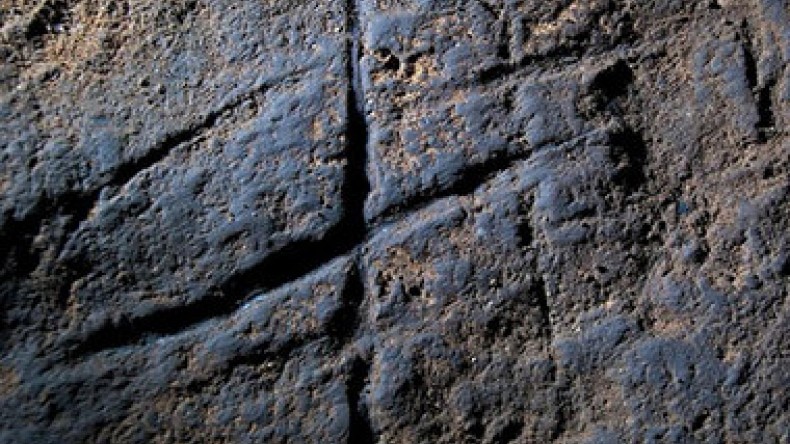
Neanderthal 'artwork' found in Gibraltar cave
An engraving found at a cave in Gibraltar may be the most compelling evidence yet for Neanderthal art, the BBC reports.
The pattern, which bears a passing resemblance to the grid for a game of noughts and crosses, was inscribed on a rock at the back of Gorham's Cave.
Mounting evidence suggests Neanderthals were not the brutes they were characterised as decades ago.
But art, a high expression of abstract thought, was long considered to be the exclusive preserve of our own species.
The scattered candidates for artistic expression by Neanderthals have not met with universal acceptance.
However, the geometric pattern identified in Gibraltar, on the southern tip of Europe, was uncovered beneath undisturbed sediments that have also yielded Neanderthal tools.
Details of the discovery by an international team of researchers has been published in the journal PNAS.
There is now ample evidence that Neanderthal intellectual abilities may have been underestimated. Recent finds suggest they intentionally buried their dead, adorned themselves with feathers, painted their bodies with black and red pigments, and consumed a more varied diet than had previously been supposed.
One of the study's authors, Prof Clive Finlayson, director of the Gibraltar Museum, said the latest find "brings the Neanderthals closer to us, yet again."
Previous candidates for Neanderthal cave art exist, including motifs from caves northern and southern Spain. Possible jewellery has been found at a site in central France, and there are even claims Neanderthals were responsible for an early musical instrument - the bone "flute" found at Divje Babe in Slovenia.
These proposed flickerings of abstract thought among our ancient relatives have all proven controversial. But the authors of the study in PNAS went to great lengths to demonstrate the intentional nature of the Gorham's Cave design.
In order to understand how the markings were made, experimental grooves were made using different tools and cutting actions on blocks of dolomite rock similar to the one at Gorham's cave.
Newsfeed
Videos






























